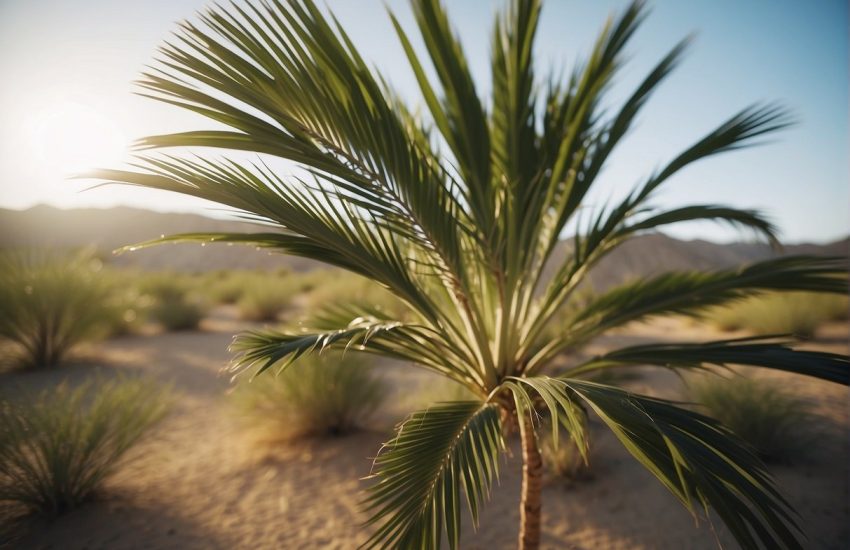Does New Mexico Have Palm Trees? Exploring the Flora of the Southwest
New Mexico is known for its scenic beauty and diverse landscape, but does it have palm trees? The answer is not a straightforward yes or no. While palm trees are not native to New Mexico, they can be found in certain areas of the state.

New Mexico’s climate is generally arid and semi-arid, with hot summers and cold winters. The state’s USDA hardiness zones range from 3b to 8a, which means that certain palm tree species can survive in the state’s milder regions. However, the cold temperatures and dry climate make it challenging for palm trees to thrive in most parts of New Mexico.
Despite the challenges, some palm tree species have been successfully introduced to New Mexico as ornamental plants. Homeowners and commercial landscapers often plant palm trees in their gardens to add a tropical touch to their surroundings. However, it’s important to note that not all palm tree species can survive in New Mexico’s climate, and proper care and maintenance are essential for their survival.
Climate and Geography of New Mexico

Understanding New Mexico’s Climate
New Mexico is a desert state located in the western region of the United States. The state’s climate is arid and semi-arid, with hot summers and cold winters. The temperatures in New Mexico can vary greatly depending on the altitude and geography of the region.
The state’s geography is characterized by its diverse landscape, which includes mountains, deserts, and plateaus. The altitude of the region also has a significant impact on its climate. The higher altitude regions of New Mexico generally have cooler temperatures than the lower altitude regions.
Geographical Influence on Vegetation
The geography of New Mexico has a significant influence on the state’s vegetation. The state’s mountainous regions are home to coniferous forests, while the desert regions are home to cacti and other desert plants.
The state’s semi-arid climate also plays a role in the type of vegetation that can thrive in the region. Plants that are able to store water and tolerate drought conditions are more likely to survive in New Mexico’s arid climate.
In conclusion, New Mexico’s climate and geography play a significant role in the state’s vegetation. The state’s arid climate and diverse landscape create a unique environment that is home to a variety of plant species.
Palm Trees in New Mexico
New Mexico is a desert state, but it is possible to grow palm trees in certain areas. Palm trees can add a tropical touch to private gardens, public spaces, botanical gardens, commercial landscapes, and more. In this section, we will explore the palm tree species that are suited for New Mexico’s climate, how to cultivate and care for them, and how to use them in landscaping.
Species Suited for New Mexico’s Climate
Some palm tree species are better suited to New Mexico’s climate than others. Windmill Palm (Trachycarpus fortunei) and European Fan Palm (Chamaerops humilis) are cold-hardy and can tolerate temperatures down to 5°F. Pindo Palm (Butia capitata) and Sago Palm (Cycas revoluta) are also good options for New Mexico because they are drought-tolerant and can tolerate temperatures as low as 5°F. California Fan Palm (Washingtonia filifera) and Mediterranean Fan Palm (Chamaerops humilis) are two other species that can grow well in New Mexico’s climate.
Cultivation and Care for Palm Trees
Palm trees require proper care to thrive in New Mexico. They need regular watering, especially during the hot, dry summer months. Palm trees can be susceptible to diseases, so it is important to monitor them closely and take action if any issues arise. Palm trees are resilient and can recover from damage caused by wind, pests, or disease, but it is important to provide them with the right conditions to help them thrive.
Palm trees prefer well-draining soil and full sun, but they can also tolerate some shade. It is important to select the right species for the location and to provide them with the right amount of sunlight. Older palm trees can also benefit from some shade to protect them from the hot sun.
Landscaping with Palm Trees
Palm trees can be used in a variety of landscaping applications in New Mexico. They can be planted in private gardens, public spaces, botanical gardens, commercial landscapes, and more. Palm trees can be used as ornamental plants or as part of a larger landscaping plan. They can be used to create a tropical oasis in a backyard or to add a touch of green to a commercial property.
In Albuquerque, Las Cruces, Santa Fe, and other areas of Southern New Mexico, palm trees can be found in private gardens, public spaces, and other locations. The town of Truth or Consequences is known for its palm trees, which can be found throughout the town. Palm trees can add a unique touch to any landscaping project in New Mexico.
Conclusion
Growing palm trees in New Mexico is possible with the right species selection, proper care, and attention to detail. Palm trees can add a tropical touch to any landscaping project and can be used in a variety of applications. By following proper care techniques and selecting the right species for the location, palm trees can thrive in New Mexico’s desert climate.


